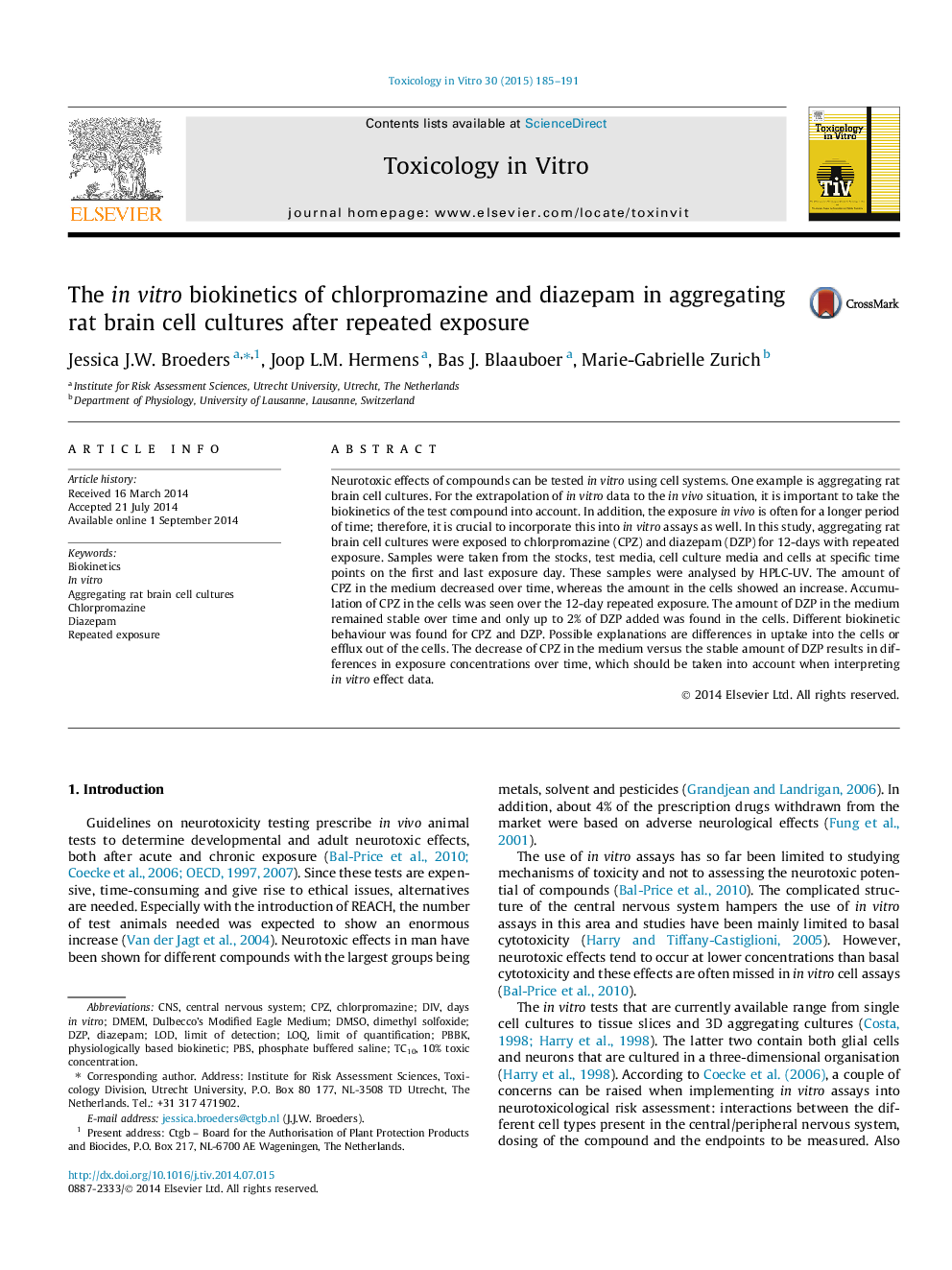| Article ID | Journal | Published Year | Pages | File Type |
|---|---|---|---|---|
| 5861305 | Toxicology in Vitro | 2015 | 7 Pages |
â¢Chlorpromazine was taken up from the medium into the cells; diazepam stayed predominantly in the medium.â¢Chlorpromazine accumulated in the aggregating rat brain cell cultures during the repeated exposure.â¢Exposure concentrations differed over time for the two compounds tested.â¢Biokinetics and exposure concentrations should be studied to obtain reliable in vitro cytotoxicity results.
Neurotoxic effects of compounds can be tested in vitro using cell systems. One example is aggregating rat brain cell cultures. For the extrapolation of in vitro data to the in vivo situation, it is important to take the biokinetics of the test compound into account. In addition, the exposure in vivo is often for a longer period of time; therefore, it is crucial to incorporate this into in vitro assays as well. In this study, aggregating rat brain cell cultures were exposed to chlorpromazine (CPZ) and diazepam (DZP) for 12-days with repeated exposure. Samples were taken from the stocks, test media, cell culture media and cells at specific time points on the first and last exposure day. These samples were analysed by HPLC-UV. The amount of CPZ in the medium decreased over time, whereas the amount in the cells showed an increase. Accumulation of CPZ in the cells was seen over the 12-day repeated exposure. The amount of DZP in the medium remained stable over time and only up to 2% of DZP added was found in the cells. Different biokinetic behaviour was found for CPZ and DZP. Possible explanations are differences in uptake into the cells or efflux out of the cells. The decrease of CPZ in the medium versus the stable amount of DZP results in differences in exposure concentrations over time, which should be taken into account when interpreting in vitro effect data.
